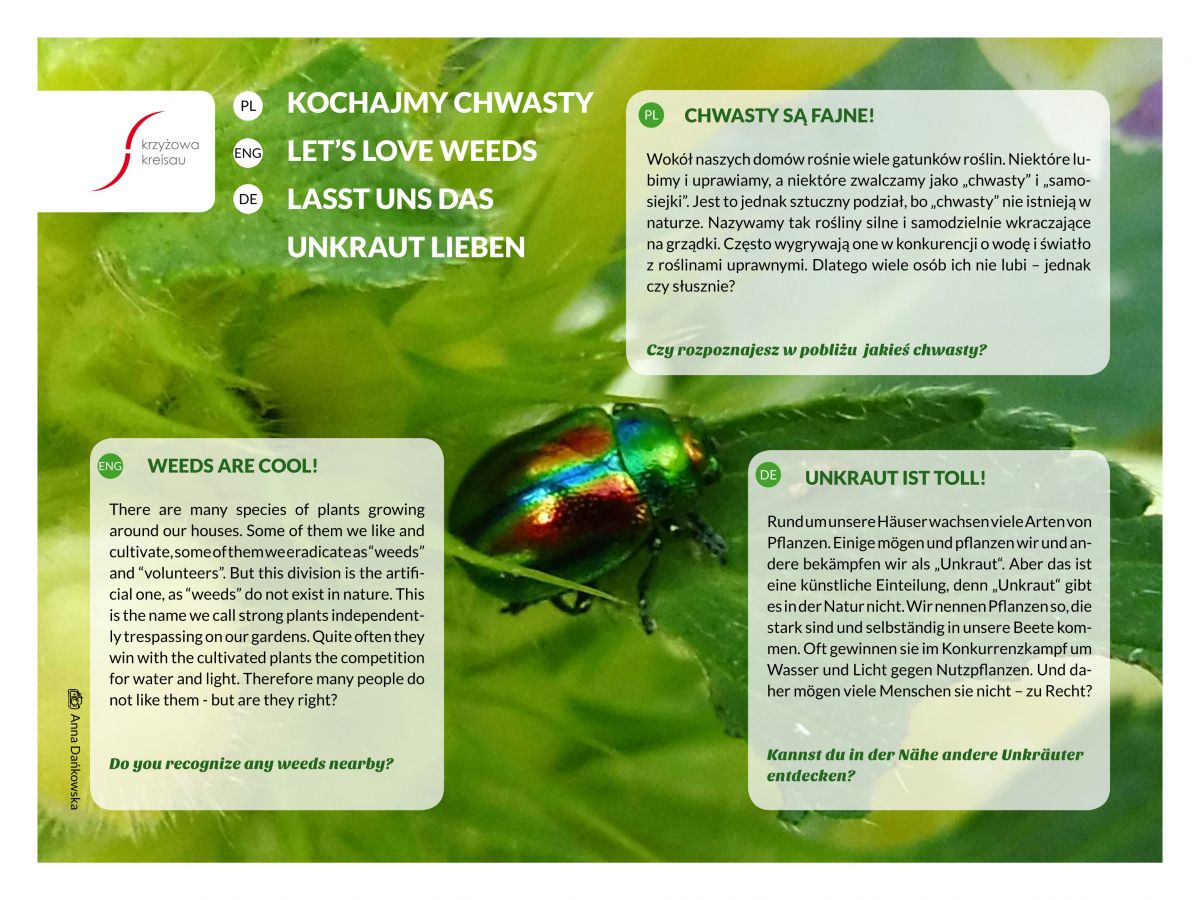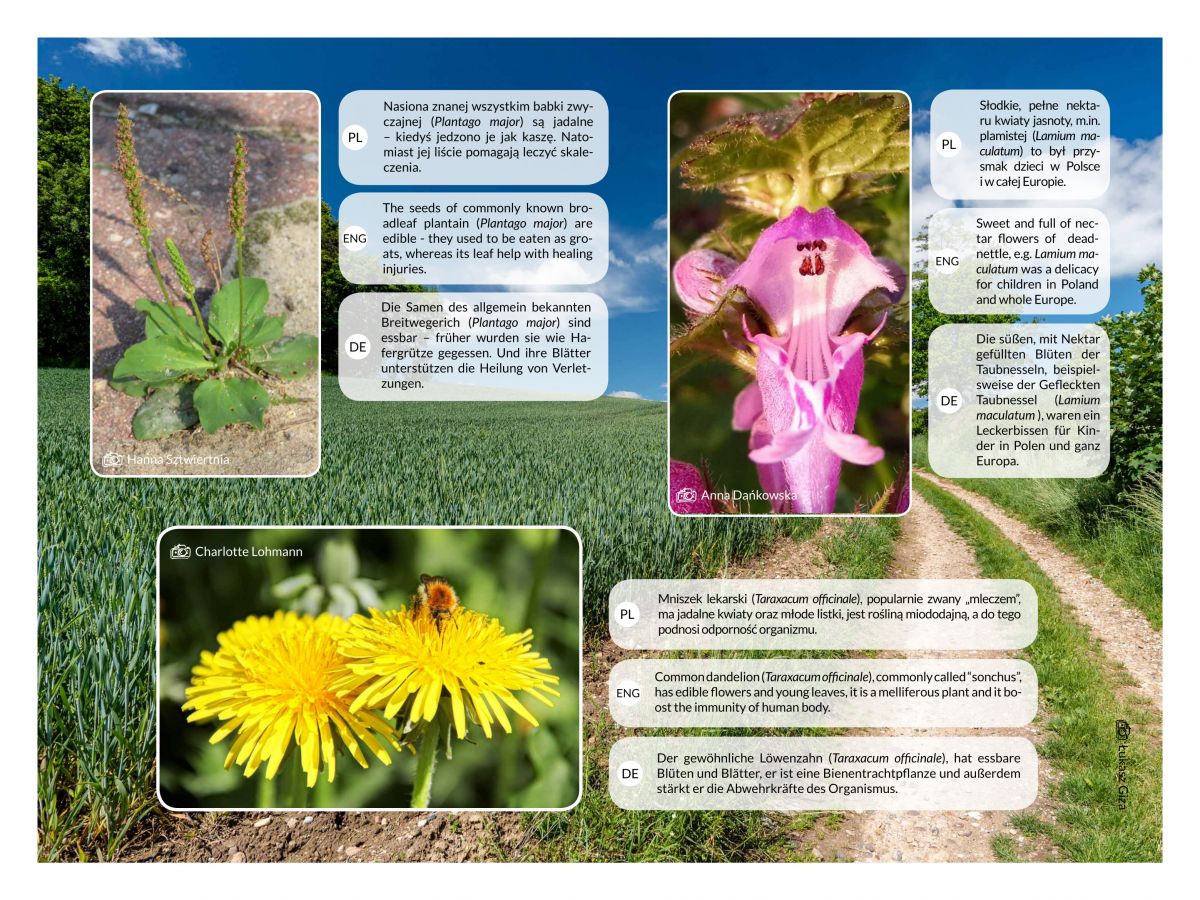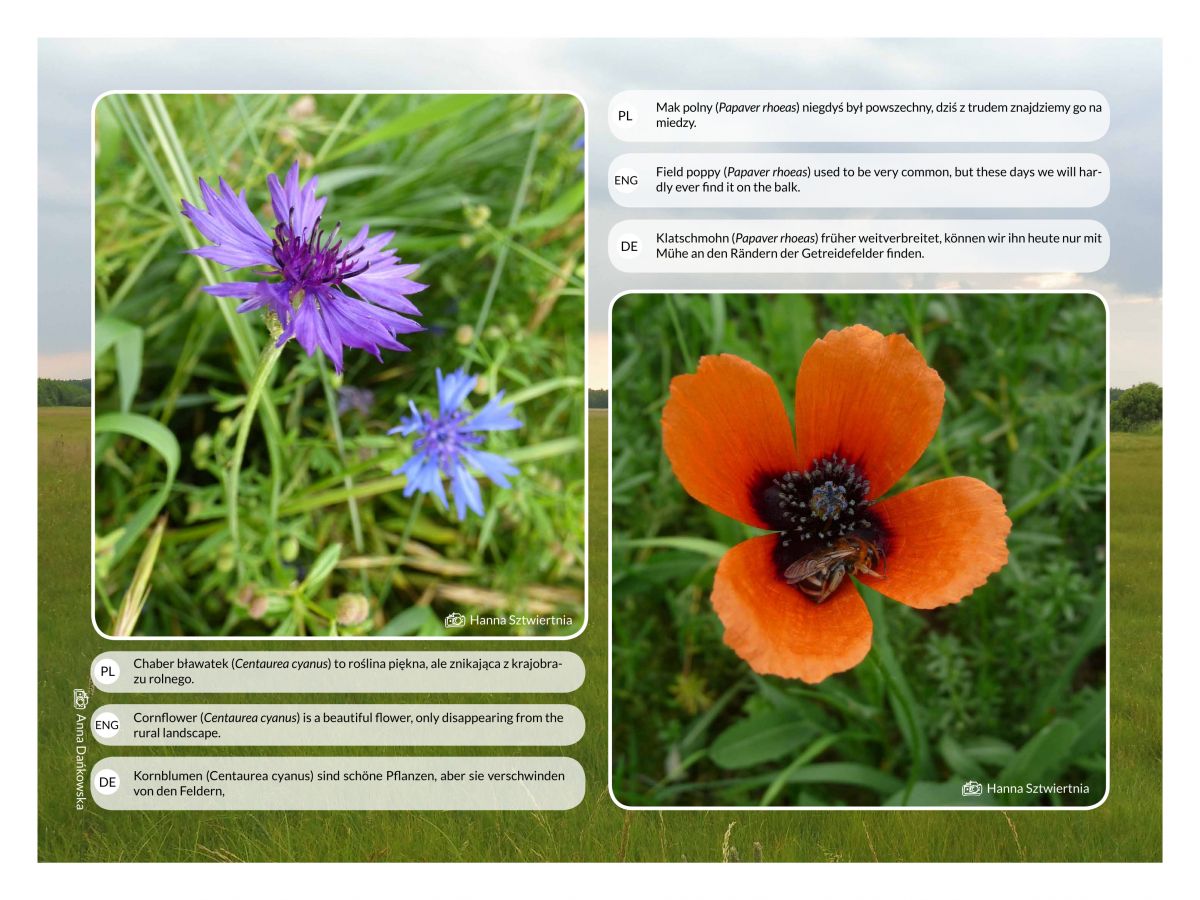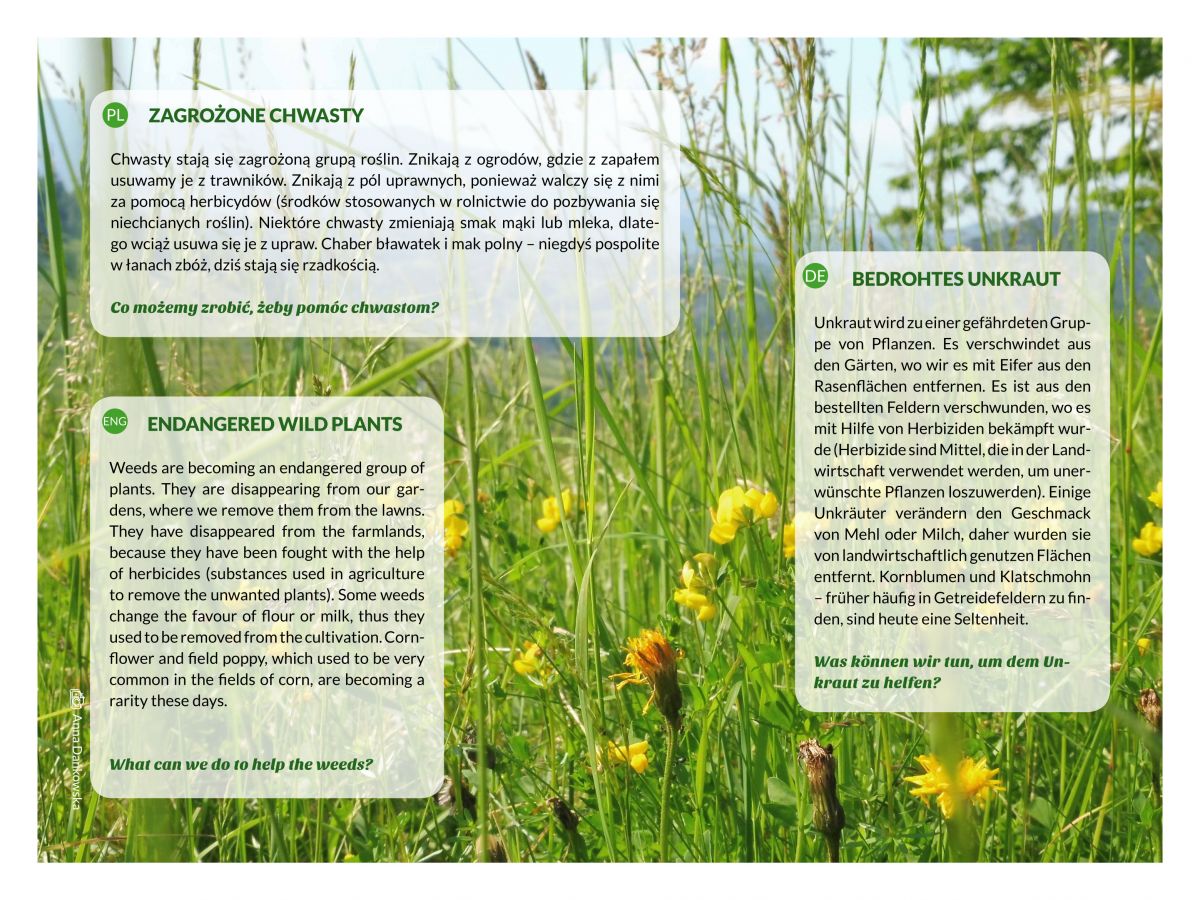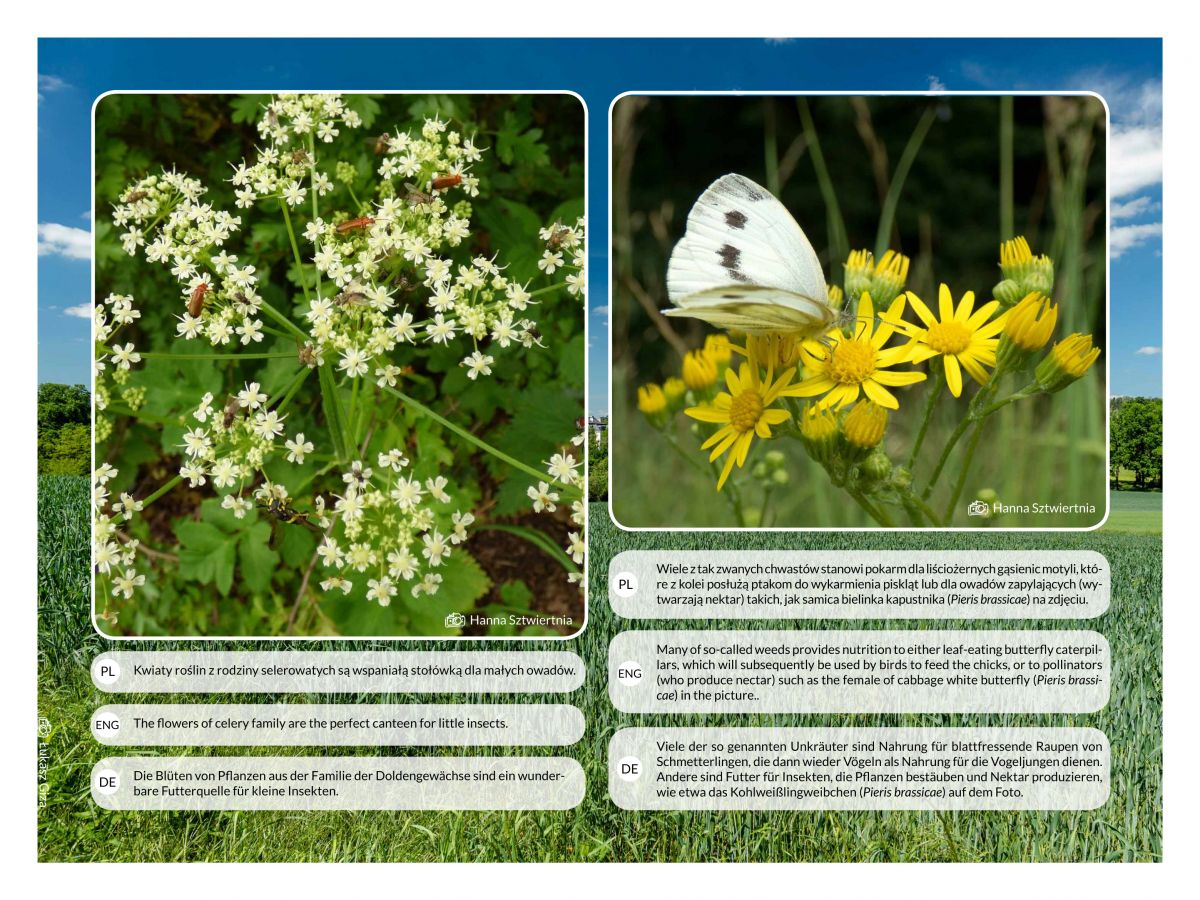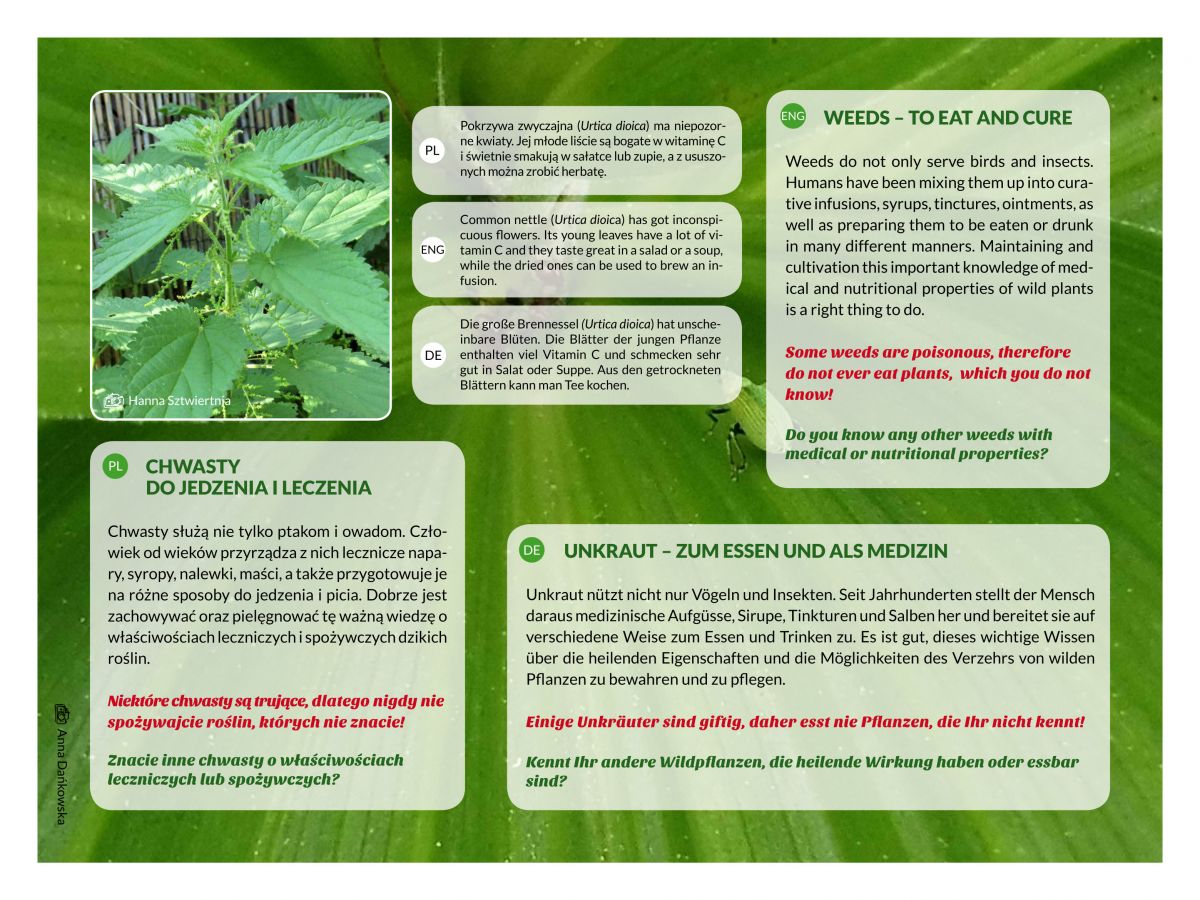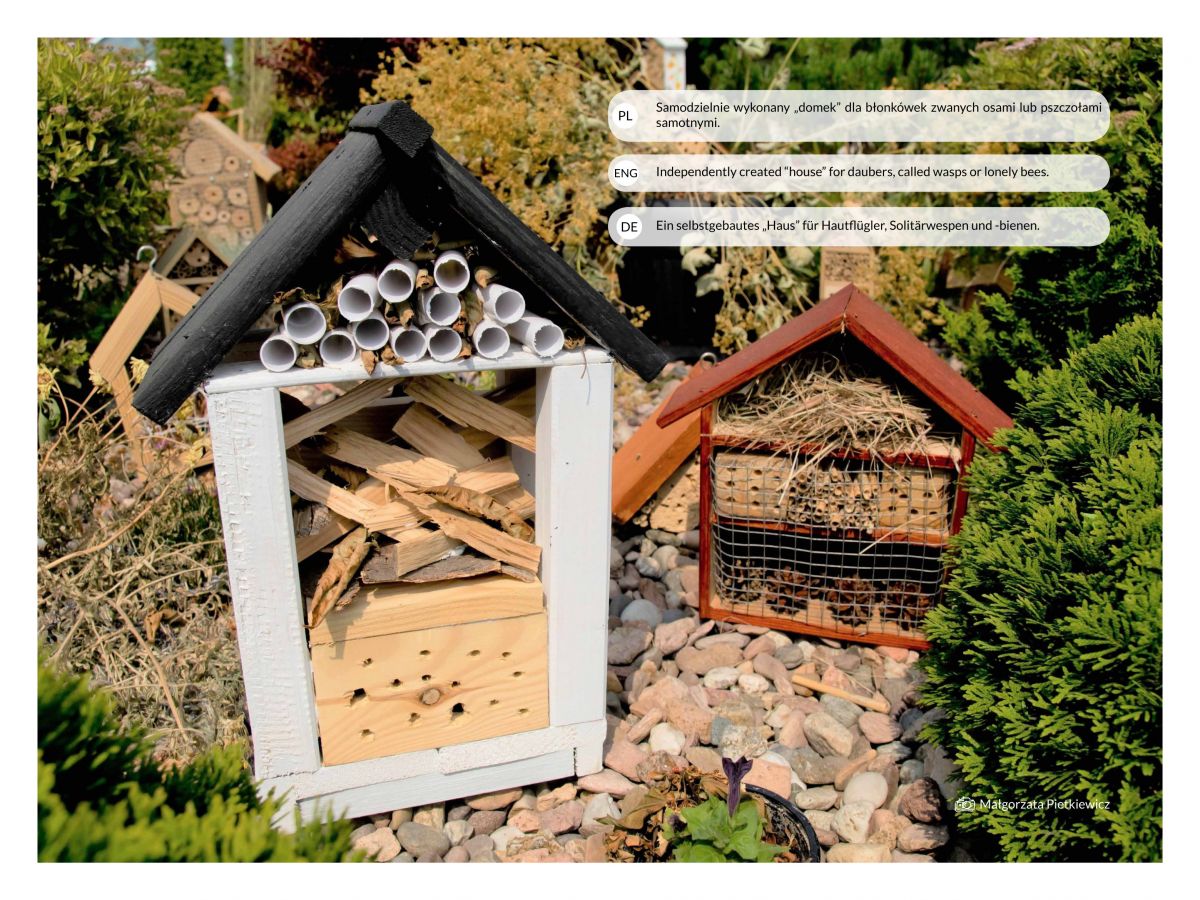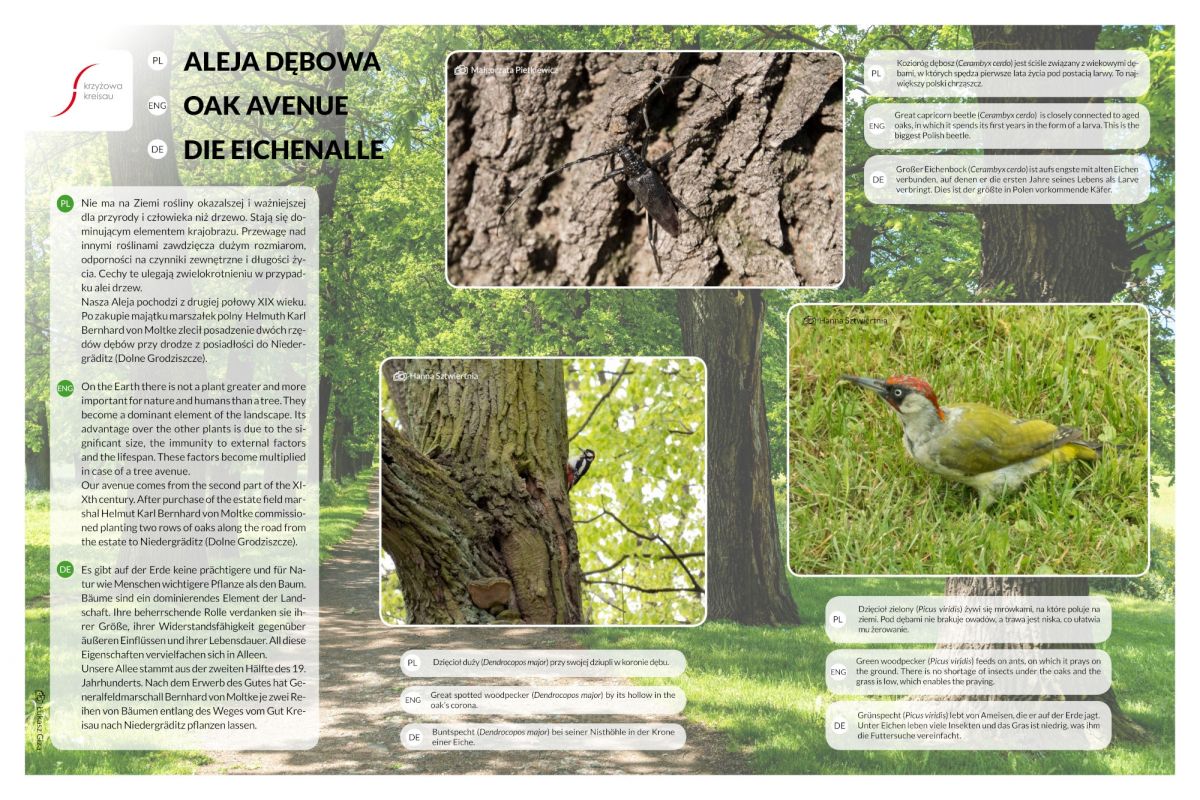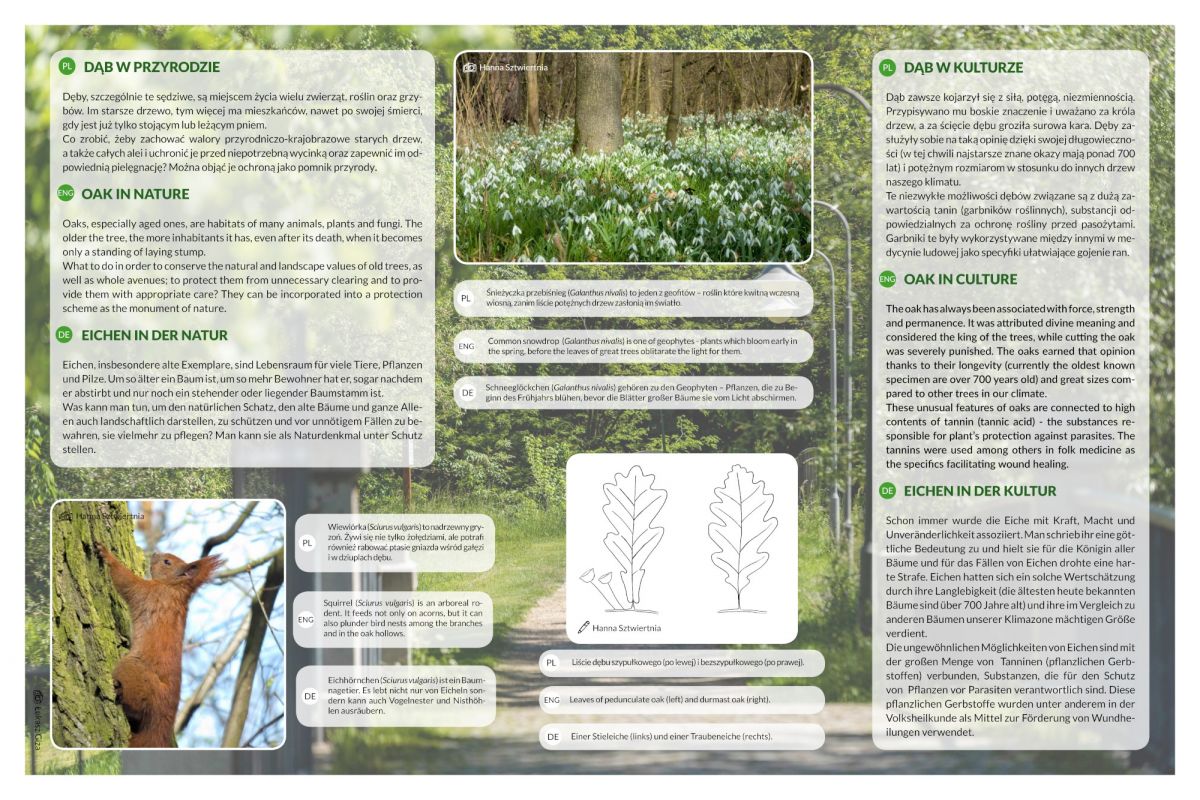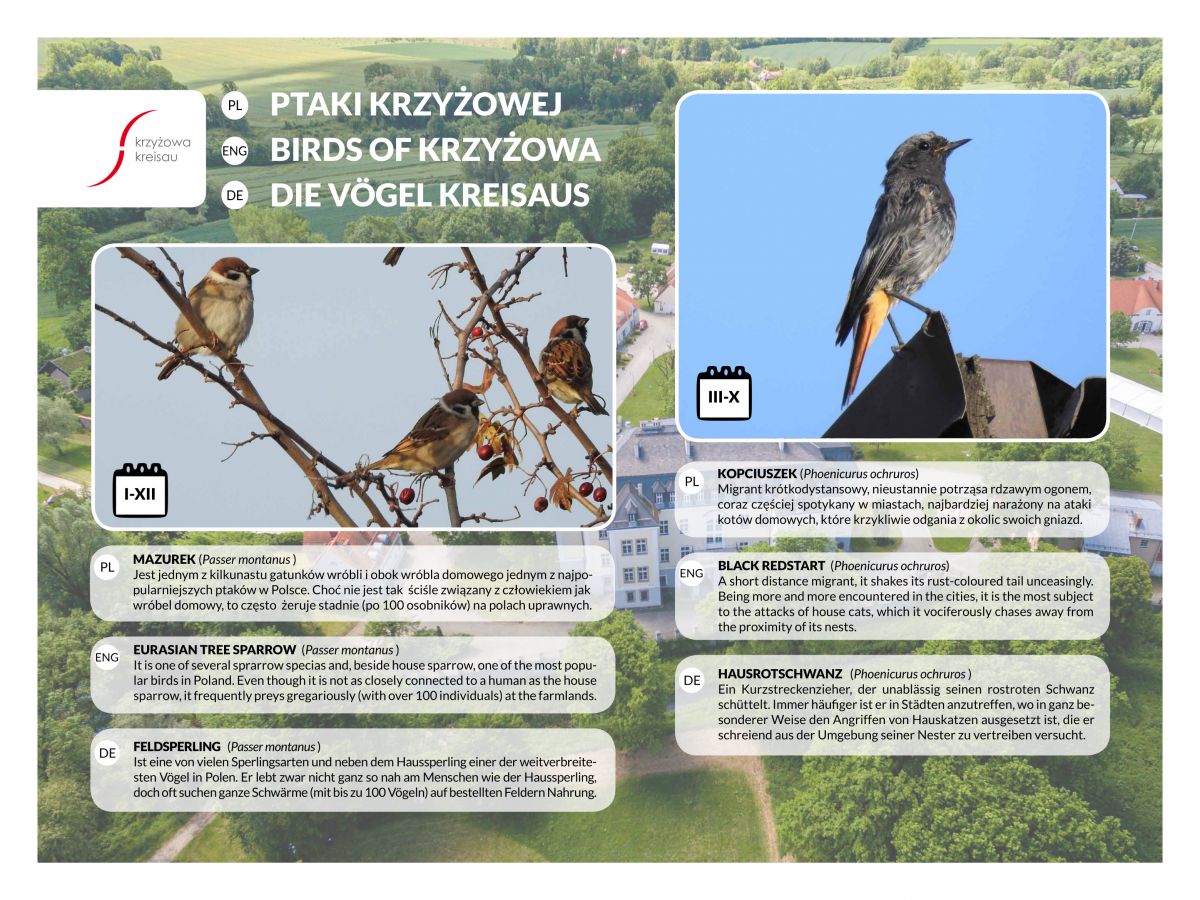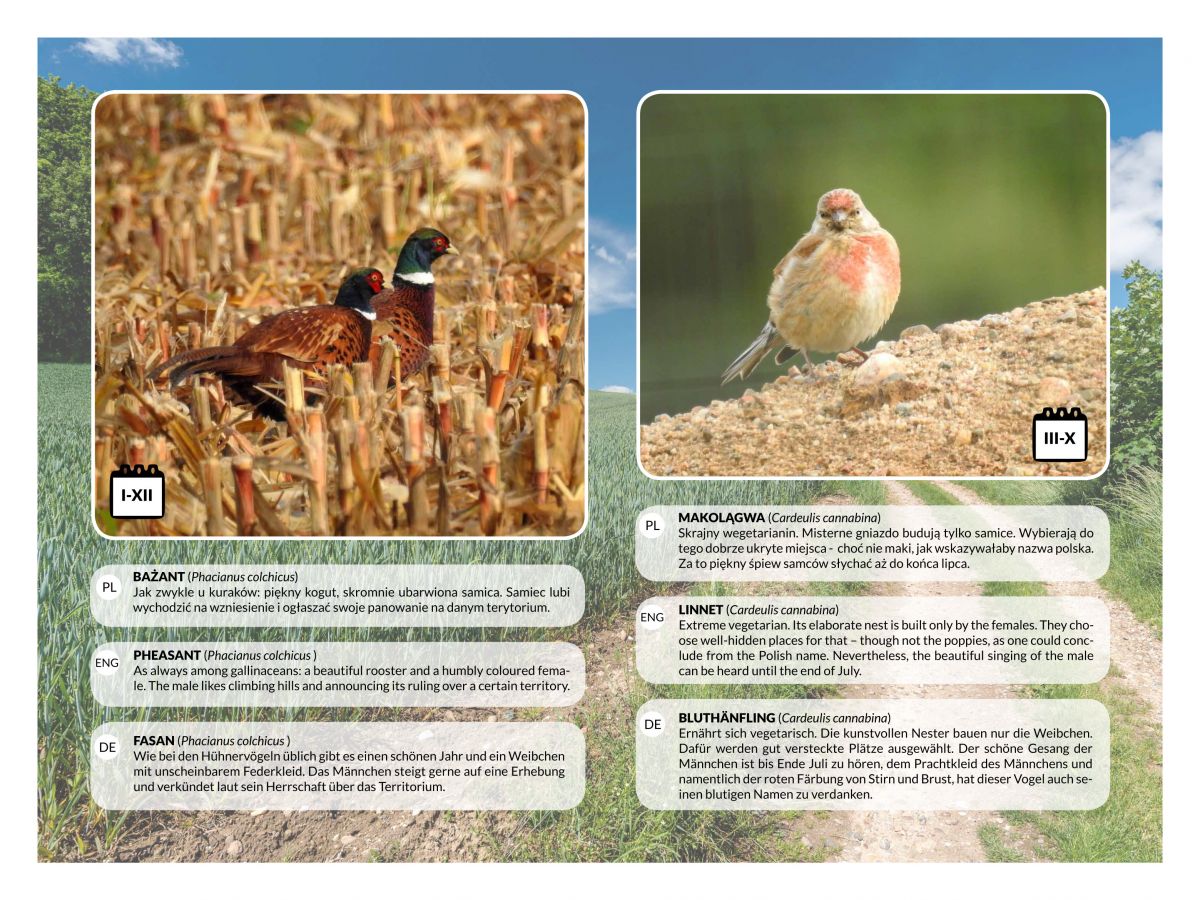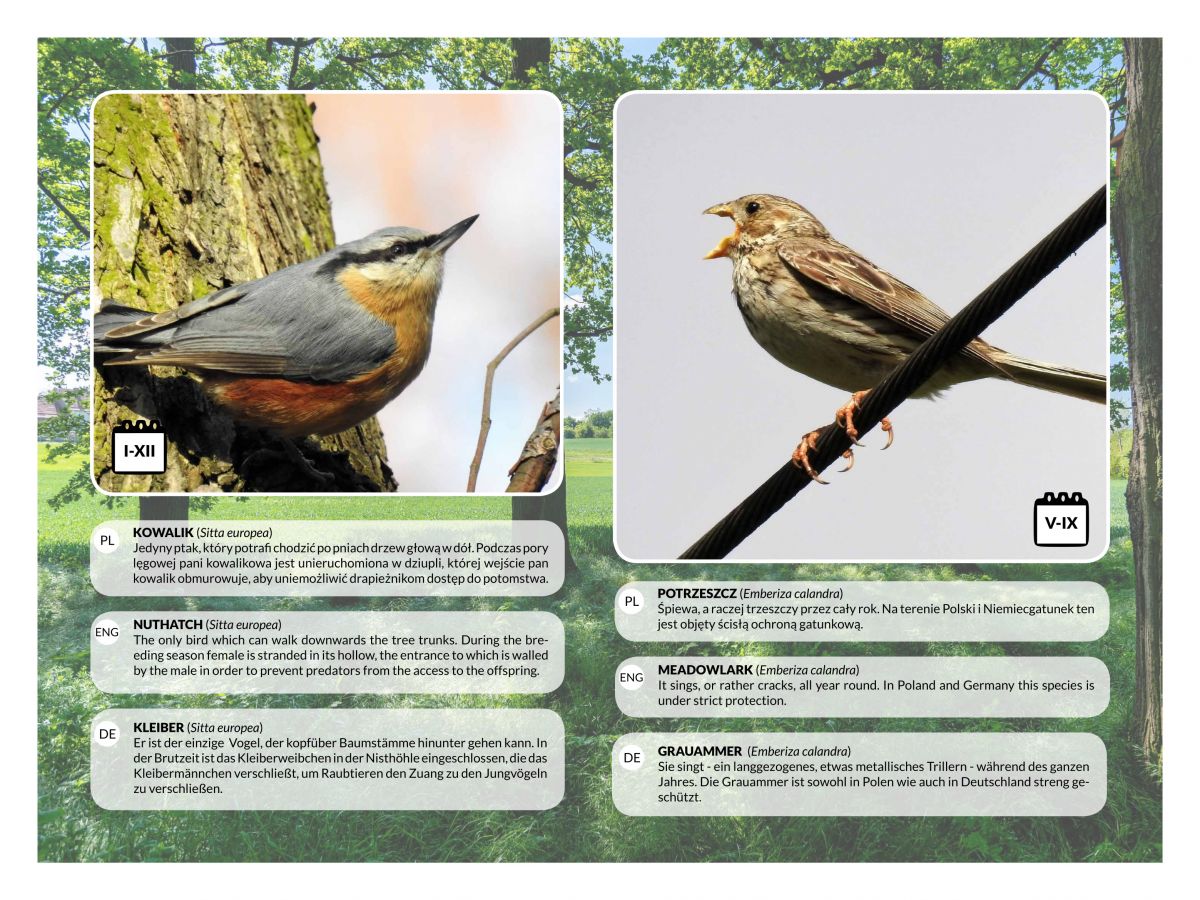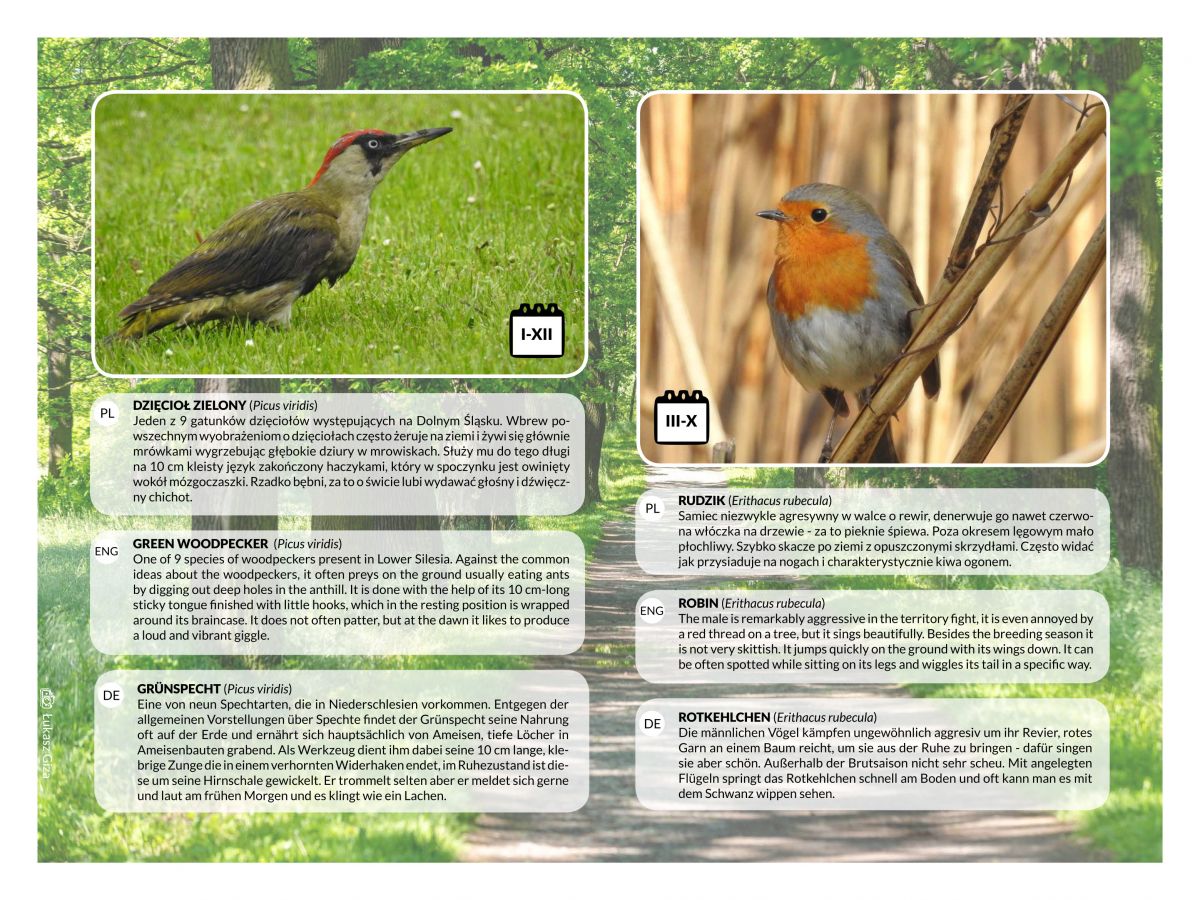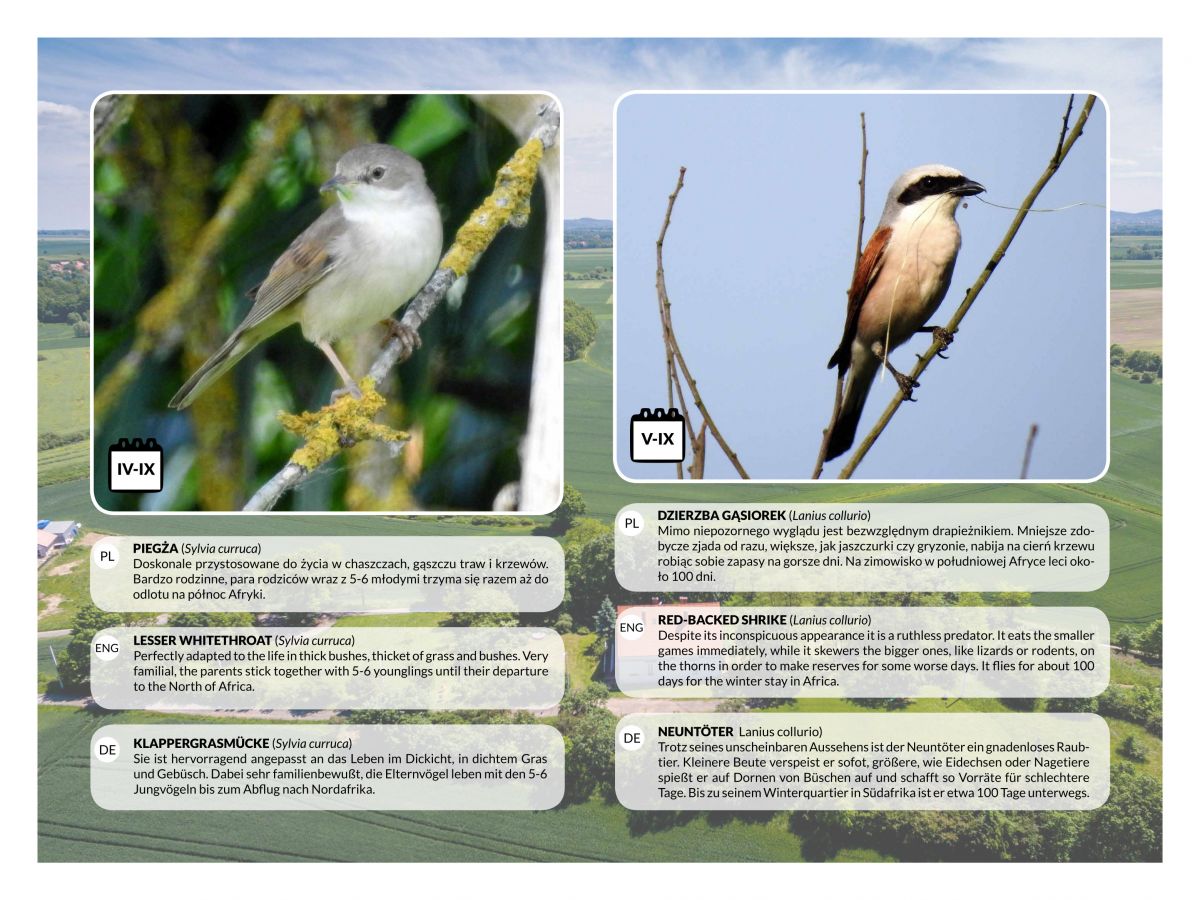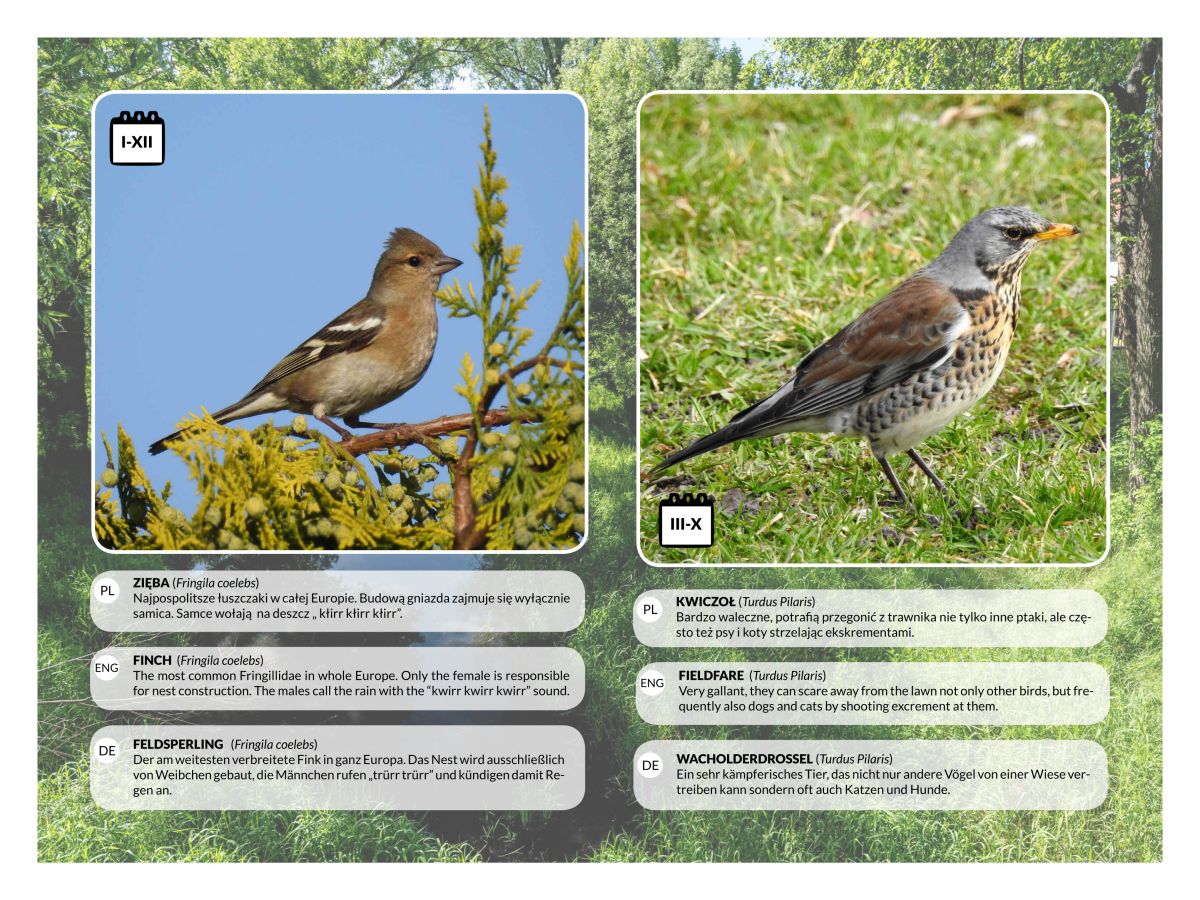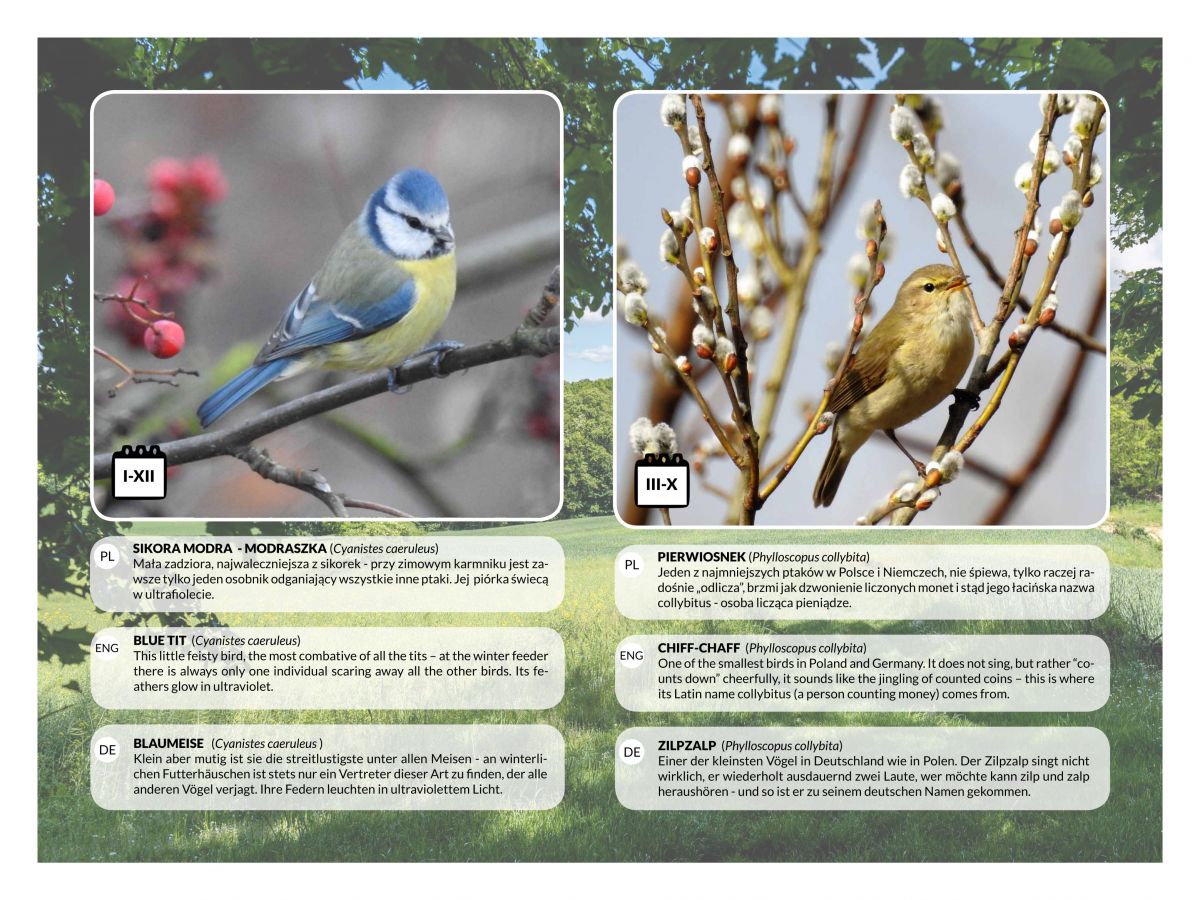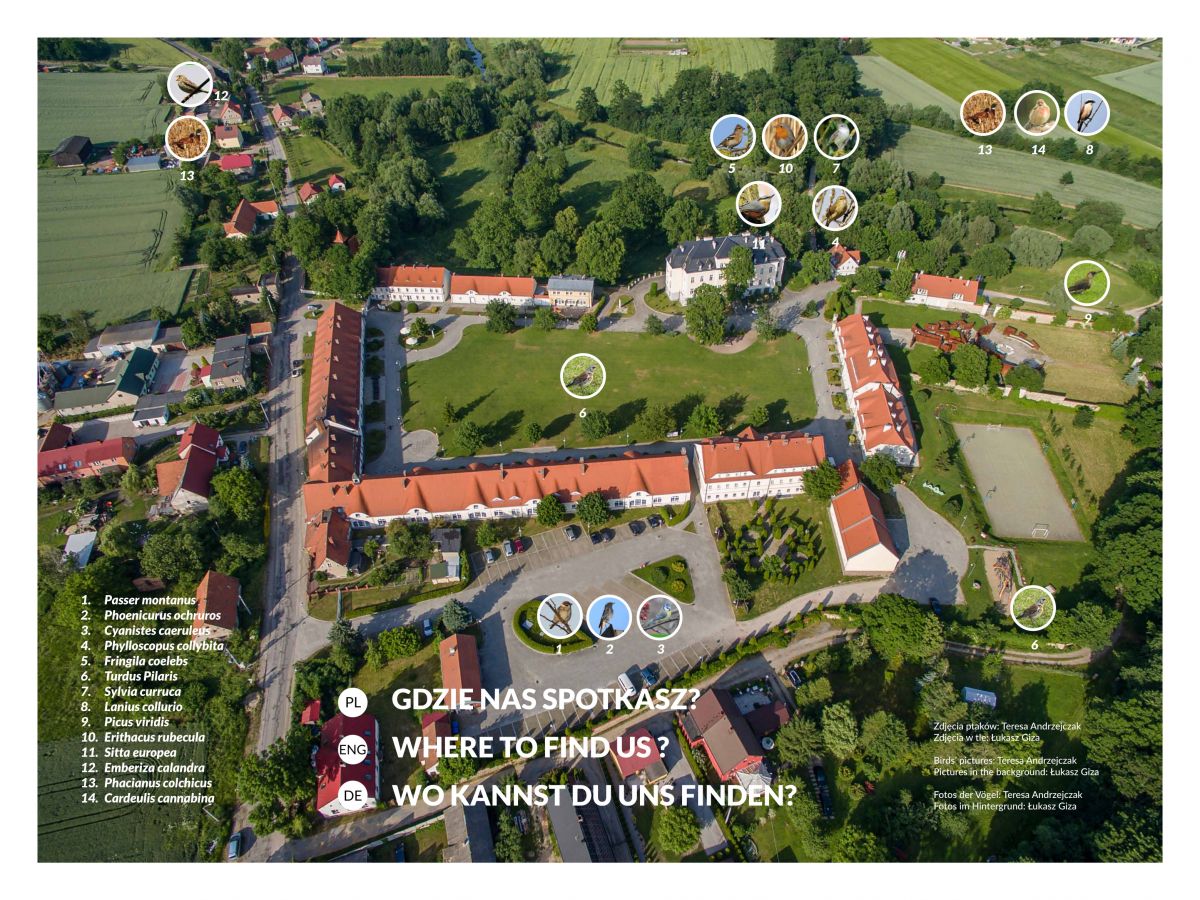
As part of the development of nature education we have developed notice boards presenting selected topics related to the natural surroundings of Krzyżowa. We want to encourage our guests to discover nature, so the boards will stand in various picturesque places in the area.
Walking around Krzyżowa you will be able to find out how unusual living organisms are trees, especially the old ones - on the example of our Oak Avenue. On the next board, we will touch upon a subject that is not associated with anything unusual or wonderful, because it simply describes weeds. However, after reading it you can understand that they also play an important role in the ecosystem.
The last board is a place where we present the winged inhabitants of Krzyżowa - fourteen bird species that can be found here. We describe their habits, feeding places and characteristics.
WEEDS ARE COOL!
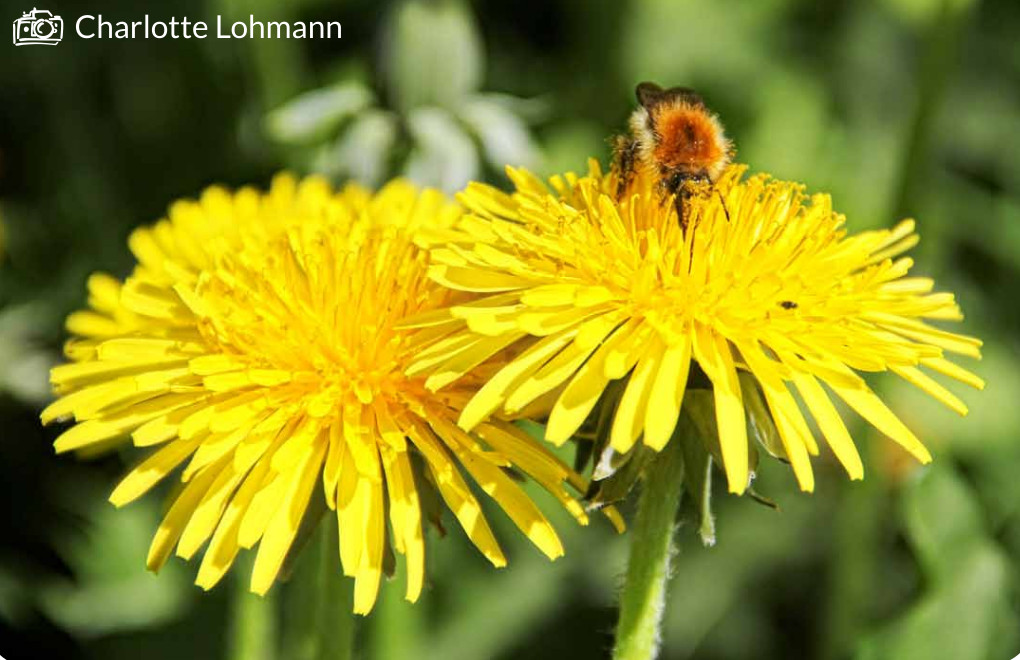 There are many species of plants growing around our houses. Some of them we like and cultivate, some of them we eradicate as “weeds” and “volunteers”. But this division is the artificial one, as “weeds” do not exist in nature. This is the name we call strong plants independently trespassing on our gardens. Quite often they win with the cultivated plants the competition for water and light. Therefore many people do not like them - but are they right?
There are many species of plants growing around our houses. Some of them we like and cultivate, some of them we eradicate as “weeds” and “volunteers”. But this division is the artificial one, as “weeds” do not exist in nature. This is the name we call strong plants independently trespassing on our gardens. Quite often they win with the cultivated plants the competition for water and light. Therefore many people do not like them - but are they right?
Many of so-called weeds provides nutrition to either leaf-eating butterfly caterpillars, which will subsequently be used by birds to feed the chicks, or to pollinators (who produce nectar) such as the female of cabbage white butterfly (Pieris brassicae).
WEEDS – TO EAT AND CURE
Weeds do not only serve birds and insects. Humans have been mixing them up into curative infusions, syrups, tinctures, ointments, as well as preparing them to be eaten or drunk in many different manners. Maintaining and cultivation this important knowledge of medical and nutritional properties of wild plants is a right thing to do.
BEDROHTES UNKRAUT
Weeds are becoming an endangered group of plants. They are disappearing from our gardens, where we remove them from the lawns. They have disappeared from the farmlands, because they have been fought with the help of herbicides (substances used in agriculture to remove the unwanted plants). Some weeds change the favour of flour or milk, thus they used to be removed from the cultivation. Cornflower and field poppy, which used to be very common in the fields of corn, are becoming a rarity these days.
![]() BOARD - WEEDS.pdf
BOARD - WEEDS.pdf
OAK AVENUE
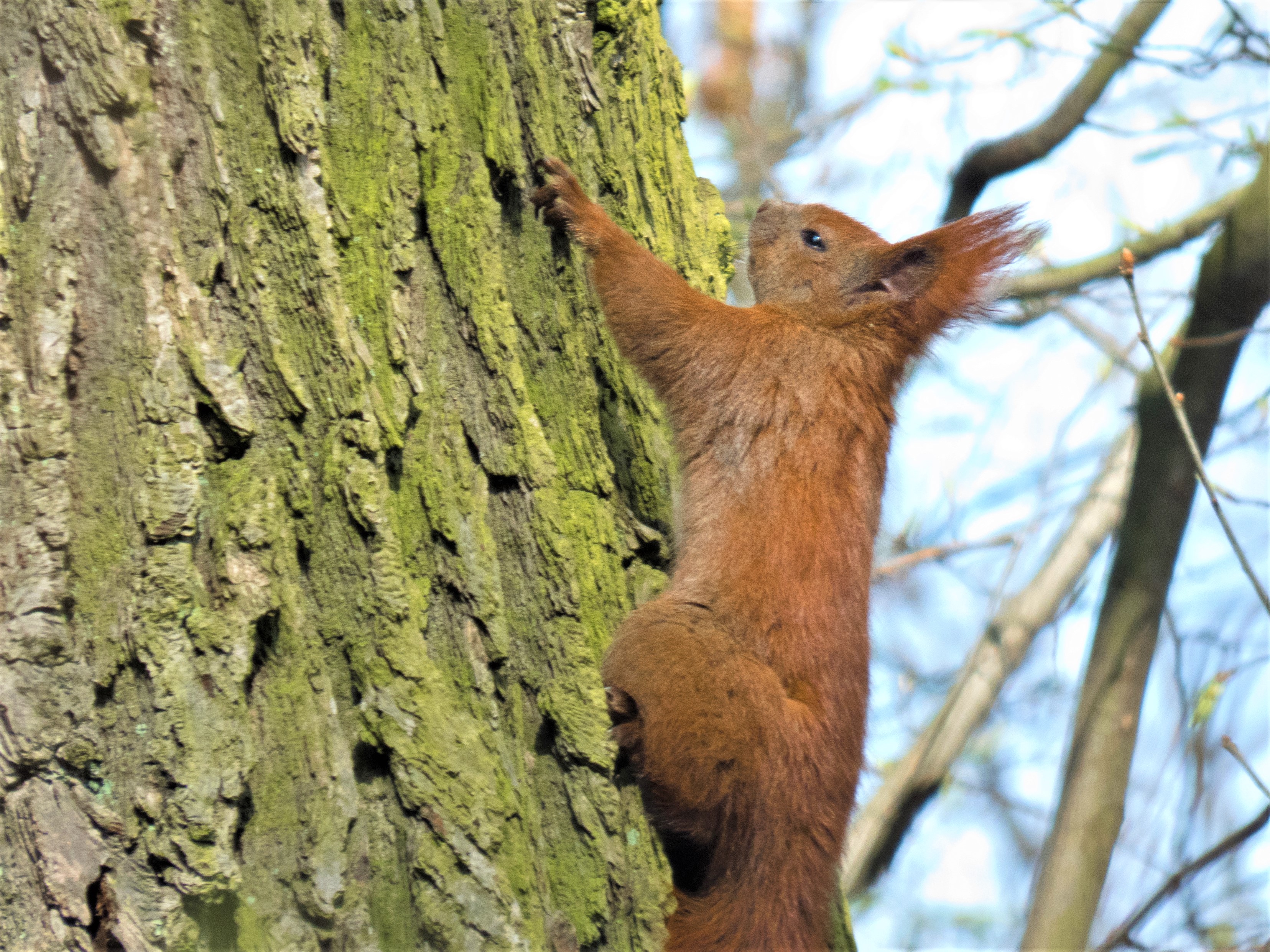 On the Earth there is not a plant greater and more important for nature and humans than a tree. They
On the Earth there is not a plant greater and more important for nature and humans than a tree. They
become a dominant element of the landscape. Its advantage over the other plants is due to the significant size, the immunity to external factors and the lifespan. These factors become multiplied
in case of a tree avenue.
Our avenue comes from the second part of the XIXth century. After purchase of the estate field marshal Helmut Karl Bernhard von Moltke commissioned planting two rows of oaks along the road from the estate to Niedergräditz (Dolne Grodziszcze).
Oak in nature
Oaks, especially aged ones, are habitats of many animals, plants and fungi. The older the tree, the more inhabitants it has, even after its death, when it becomes only a standing of laying stump.
What to do in order to conserve the natural and landscape values of old trees, as well as whole avenues; to protect them from unnecessary clearing and to provide them with appropriate care? They can be incorporated into a protection scheme as the monument of nature.
Oak in culturE
The oak has always been associated with force, strength and permanence. It was attributed divine meaning and considered the king of the trees, while cutting the oak was severely punished. The oaks earned that opinion thanks to their longevity (currently the oldest known specimen are over 700 years old) and great sizes compared to other trees in our climate.
These unusual features of oaks are connected to high contents of tannin (tannic acid) - the substances responsible for plant’s protection against parasites. The tannins were used among others in folk medicine as the specifics facilitating wound healing.
Birds in Krzyżowa
The "Green Krzyżowa" tab was created thanks to the funding of the Heinrich Böll Foundation.


